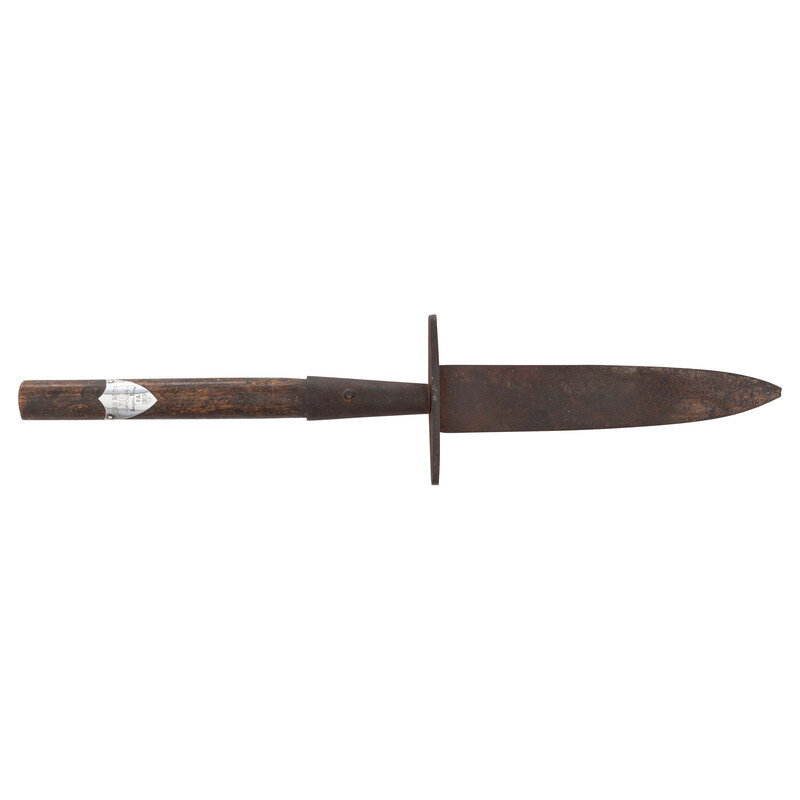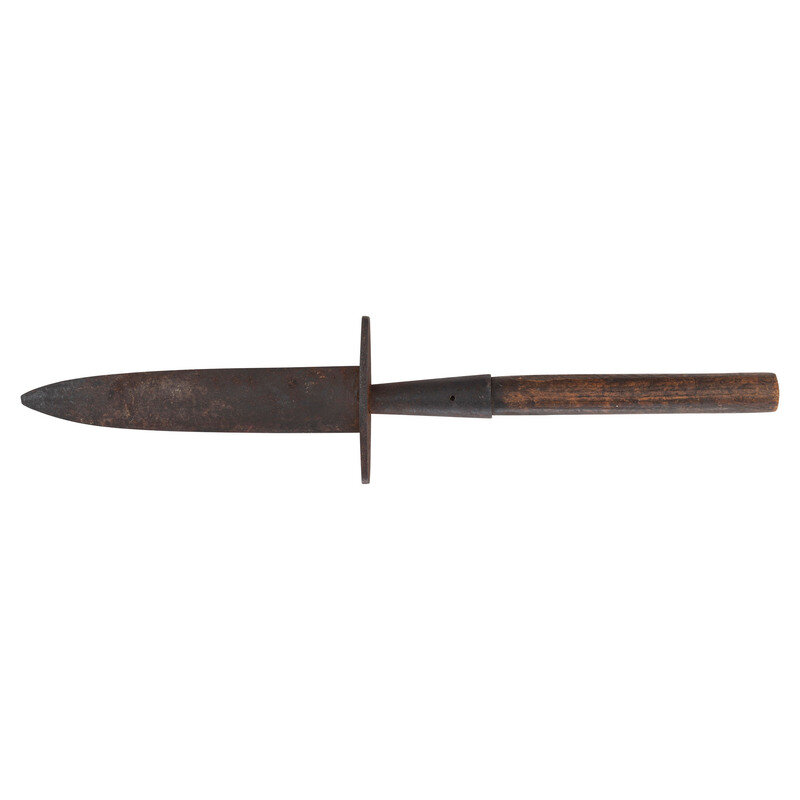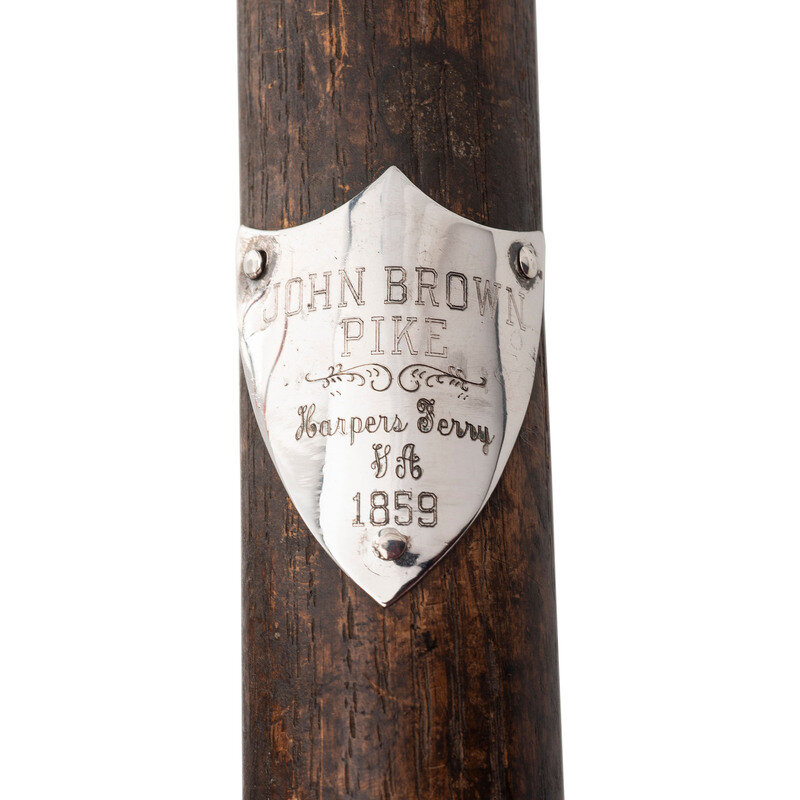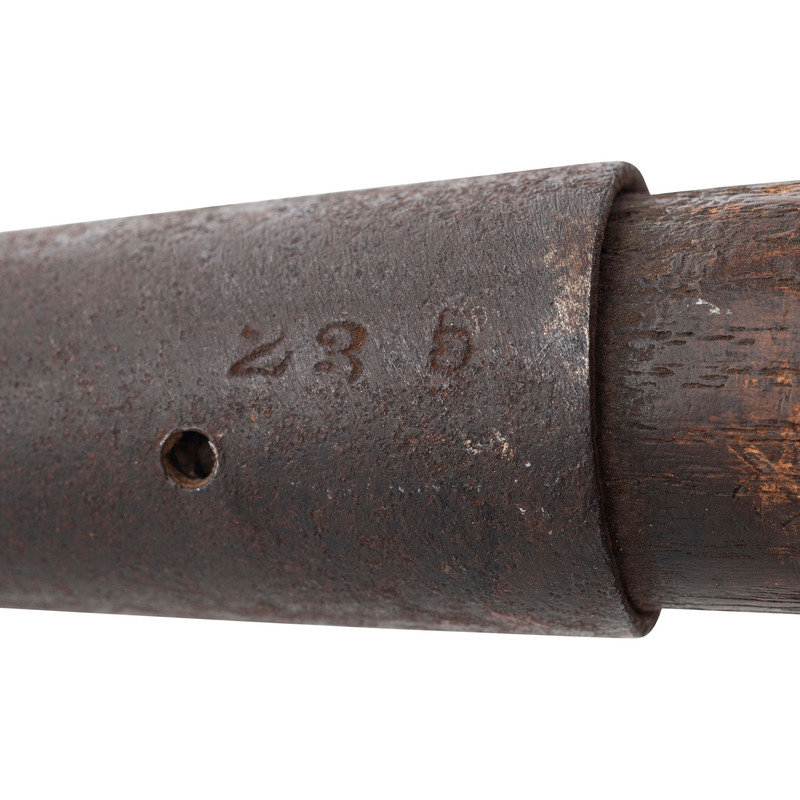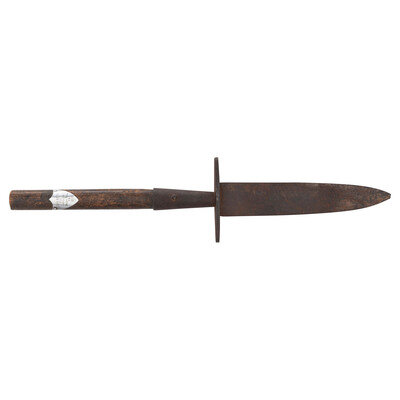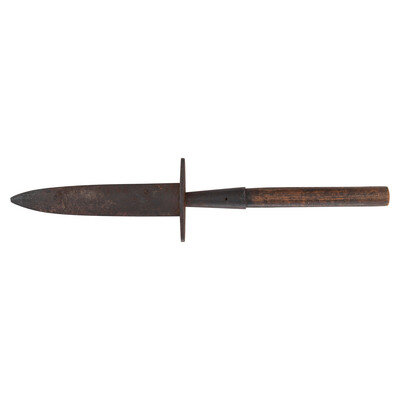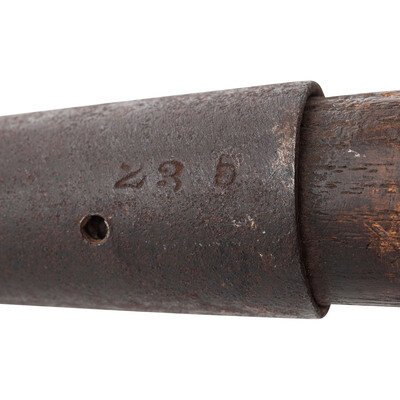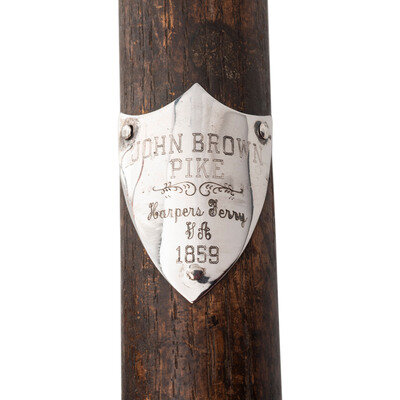Condition Report
Contact Information
Auction Specialists
Lot 14
Lot Description
9.5" double edged spear point blade, 1.8" wide at base with an oval counter guard that is nominally 4.5" long and 1.25" wide at its widest point. Blade and guard attached to a 3.25" tapered collar which is numbered 235. Overall length of blade and collar is 12.875". The collar secured to the remnants of the round ash haft that is nominally 1.05" in diameter and extends only 7.3125" from the bottom of the collar. Overall of length in current configuration is 20.3125". A modern, nominally 1.5" tall by 1.05" wide shield shaped plaque has been added to the haft that is engraved in four lines: JOHN BROWN/PIKE/Harpers Ferry/1859.
In 1857 John Brown contracted with a Collinsville, CT based blacksmith named Charles Blair to produce 1,000 of these iron bladed pikes with 6' hafts at the rate of $1 each, which Brown agreed to pay in installments. After producing 500 of the weapons and not receiving additional funds, Blair temporarily stopped production. In 1859 Brown returned to Blair with enough money for 954 of the pikes, which he asked Blair to ship to Chambersburg, PA upon their completion. From there, the pikes were transported to the farm in Maryland only a few miles from Harpers Ferry that Brown had rented as his base of operations for the coming raid.
On October 16, 1859 Brown and his small band of twenty-one men consisting of a mixture of white and African American men, some free and some escaped from bondage, attacked the Harpers Ferry Armory armed with both Sharps Carbines and some of these pikes. The balance of the pikes were intended to arm the newly emancipated African Americans that Brown hoped to lead in an insurrection. The raid was a failure primarily due to an armed response by the local citizenry and after a party of US Marines arrived, led by Robert E Lee and JEB Stuart, the raiders were subdued and captured on October 18.
In all, ten of Brown's men were killed during the raid, five escaped, and seven were tried and executed including Brown. The balance of Brown's weapons cache was discovered after the raid and these pikes became some of the first souvenirs from the soon to erupt American Civil War. The pike conforms to other known examples from the Brown raid and is an untouched example from the period, other than the addition of the modern descriptive plaque and the shortening of the haft, which appears to have happened very long ago.
Frank L. Stoner
This lot is located in Cincinnati.
